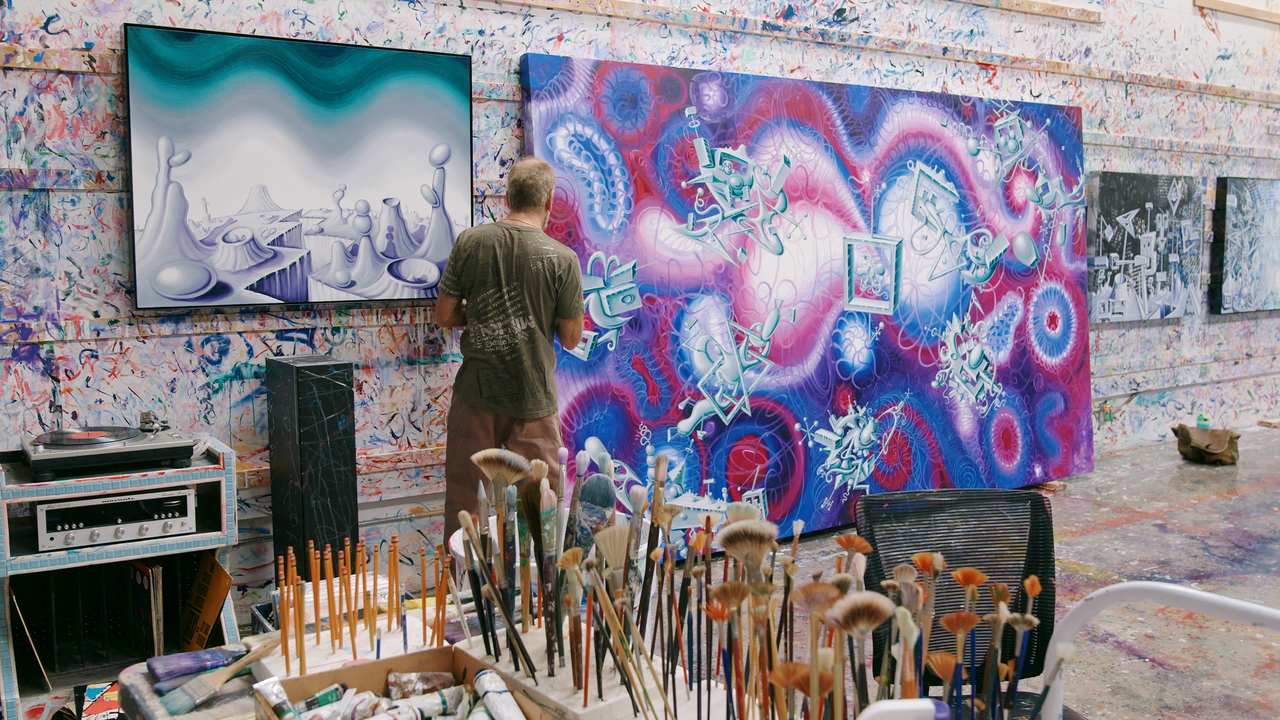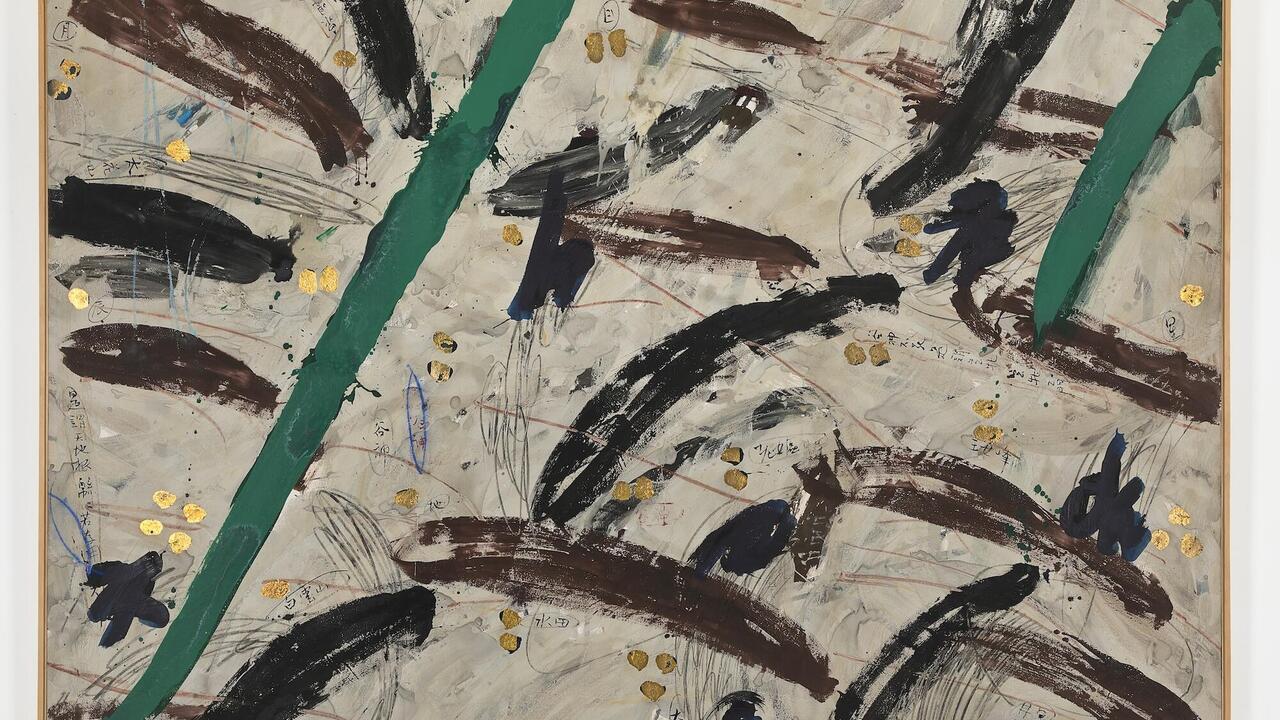Christoph Schlingensief
KW Institute for Contemporary Art, Berlin
KW Institute for Contemporary Art, Berlin

Christoph Schlingensief was many things: the last proponent of New German Cinema, a theatrical wunderkind, a politician, a talk show host, an opera director and increasingly, in the years before his death in 2010, a fine artist. He made a television show in the cellar of Berlin’s Volksbühne in 1997 and another on German MTV in 2000; at Documenta X in 1997, he called for then-German Chancellor Helmut Kohl to be killed; in 1998 he founded his own political party and in 2003 his own religion, the CHURCH of FEAR, he produced Wagner at Bayreuth between 2004 and 2007 and founded an ‘opera village’ in Burkina Faso in 2009. At the 2011 Venice Biennale, his posthumous exhibition at the German pavilion won the Golden Lion. Having been zealously branded an enfant terrible and provocateur early on in his career, Schlingensief was later elevated, on a wave of acceptance, to the status of state-sanctioned artist. In both cases, this had something to do with strategies of systematic neutralization.
But how can his sprawling, ungraspable oeuvre be exhibited in a museum without locking it up inside the realm of fine art? And how can someone who made his illness with cancer so radically public be approached posthumously without being portrayed as art’s great sufferer? This show – planned before Schlingensief’s death and now curated in consultation with his widow Aino Laberenz by Anna-Catharina Gebbers, Susanne Pfeffer and Klaus Biesenbach – was unable to solve these problems. It merely highlighted them.
Although the curators were reluctantto call the show a ‘retrospective’, it contained almost everything Schlingensief produced, starting with his feature-length films: the feverish 100 Jahre Adolf Hitler – Die letzte Stunde im Führerbunker (100 Years of Adolph Hitler, The Last Hour in the Führer’s Bunker, 1989); the post-1989 splatter movie Das deutsche Kettensägenmassaker (The German Chainsaw Massacre, 1990) in which marauding bands of West Germans make sausage meat out of East Germans relocated to ‘their’ half of the country; and his self-proclaimed ‘last piece of New German Cinema’, Die 120 Tage von Bottrop (The 120 Days of Bottrop, 1997), is a take on German cinema somewhere between the legacy of Rainer Werner Fassbinder, the bad puns of Sönke Wortmann, with a cameo by Roland Emmerich. These films poke about in German wounds; always slightly unpleasant in their exorcist zeal and Oedipal obsession, at the same time being ridiculously overdone, dripping in fake blood. The perfect synthesis, then, of a B-movie aesthetic and German auteur cinema.
In many places, the exhibition tried to present Schlingensief’s ruthless but circumspect approach as the thread running through his work: cannibalizing a wide range offormats to assimilate German colonial history and current politics – as in the 18-channel video installation The African Twintowers (2009) – chewing everything up and spitting it out as installations, political interventions, opera productions or theatre events. Objects, forms, characters – everything here is subjected to ‘multiple exposure’, as Schlingensief put it, using the idiom of film (the fieldwhere he was most at home). As a result, his theatre was a zombie séance for Nazis, Rudi Dutschke and the Berlin Republic; his art was a procession of revenants for Joseph Beuys, Dieter Roth and Hermann Nitsch and his opera was a presumptuous and illegitimate Fitzcarraldo fantasy.
Almost inevitably, the show implied, the outcome was an all-devouring total art work of Wagnerian proportions that transcended life and death. This totalizing vision was brought to bear in the Parsifal productions realized by Schlingensief in Bayreuth between 2004 and 2007, with their central video of a rotting hare crawling with maggots and other creatures. This video, titled Hasenverwesung (Rotting Hare, 2007), a morbid exaggeration of Beuys’ How to Explain Pictures to a Dead Hare (1965), was screened here as part of the 2007 installation Cross-Mutilation originally developed for Zurich’s Migros Museum. But the focal point of the exhibition, on the ground floor, was the large-scale installation Animatograph Edition Parispark (Ragnarök) (2005), presented as the buzzing energy core of a divergent oeuvre: a musty, trash-strewn rotating stage – with its Hitler portraits and claustrophobic passages, its crust of mud and its sustained droning sound – that looked like an abandoned Nazi field camp that is slowly becoming overgrown and which is meant, according to Schlingensief, to suck in its surroundings and abolish the divide between art and viewer.
Here, existential pathos and German heaviness, something always present in Schlingensief’s work, became overbearing. It is not only since his death that Schlingensief ‘has been missed’, as is so often claimed. He is already missing here, in this 2005 installation. There is no anarchic berserkerto take all this freshly generated pathos and chop it up with an axe, no director to storm the stage of his own productions as arampaging self-destructive troublemaker. One also felt the absence of the type of socially-minded character that he became in the late 1990s and early 2000s, when – in theatre events, actions with his political party Chance 2000 and television shows like U 3000 (2000) or Freakstars 3000 (2002) – he put his neck on the line, putting physically and mentally disabled people on stage, or encouraging jobless people and welfare recipients to go shopping in Berlin’s upscale KaDeWe department store. ‘Vote For Yourself’ was the election campaign slogan for Chance 2000, referring not only toself-empowerment, but also self-responsibility (seeing the works of this periodtogether in one place was the highlight of the exhibition).
At his best moments, Schlingensief played a precarious game teetering on the fine line between pathos and irony; between serious, resolutely political issues and adrastically humorous delivery often not quite politically correct. In a quasi-schizophrenic dialectic of self-sabotaging actions, failure was inscribed into his works ‘as an opportunity’ from the outset.
The success of Schlingensief’s work depended crucially on not letting the principle of transgression become an end in itself, linking it instead to a specific context and a stated aim. In the exhibition, shown as video documentation, this was illustrated best by Bitte liebt Österreich – Erste österreichische Koalitionswoche (Please Love Austria – First Austrian Coalition Week, 2000), presented in a container outside the venue. For this action based on the Big Brother format, Schlingensief had a container village built in a Viennese shopping street and crammed 12 supposed asylum seekers inside. One by one, they were then voted out, not only of the container village, but the country – a poignant and treacherous over-fulfilment of campaign promises made by Austria’s then newly elected right-wing populist Freedom Party (FPÖ), but also a critique of the cynicism of reality TV. Here, too, the work involved a merging of art, politics and the media, to the point of outraging public opinion across the political spectrum – some attacked Schlingensief’s art because it made them look like fools, others because they saw an inhuman logic at work in its exaggerations of reality.
Schlingensief’s works need this friction in order to function. They develop their resounding force and their rage precisely where they are implanted parasitically within prevailing conditions that they are at odds with. In the total art work, by contrast, there is no such tension. With its anything goes ethos, the ever-expanding art industry itself – formerly the vault of ‘fine’ art but long since a holding centre for all manner of cultural productions – fosters a totalizing tendency. The question of whether Schlingensief would have managed to oppose this impulse remains a matter of pure speculation. He really is missed.
Translated by Nicholas Grindell
















